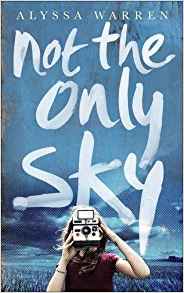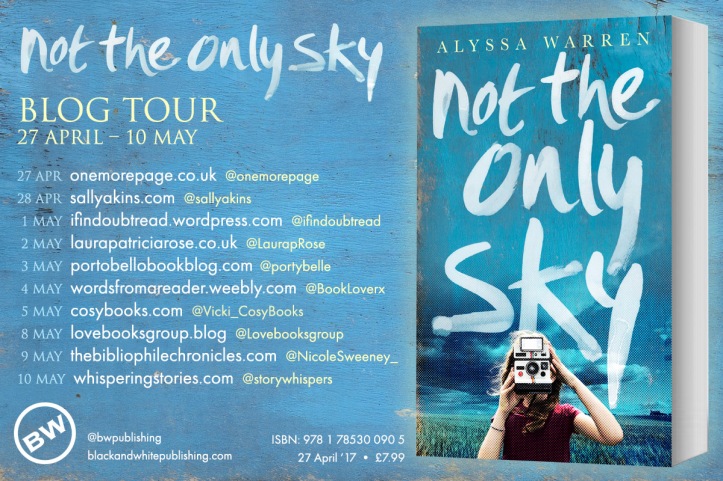
Wait. Patient. Now. Not long. Good girl. Wait here. Brave girl. Think of it as a vacation.’ ‘Back in a jiffy.’ Big Bend, population 500, South Dakota, 1988. Eight-year-old Tiny Mite lives in a ramshackle farmhouse next to her grandfather’s crashed airplane and the pine tree where she trains as a spy. Goddamn is her favourite word. Taking pictures with her camera made of aluminum foil and a tin can is her new big thing. She lives with Bee, her apocalypse-obsessed grandmother, and Luvie, her hard-drinking great-aunt. And then there’s her mother Velvet, beautiful and desperate, still in love with her high school boyfriend who she left to have a brief fling with Tiny Mite’s absent father. One night, Tiny Mite hears a cry, but it’s not what she imagines. And nothing will ever be the same. Six years later, Clea won’t let anyone call her Tiny Mite anymore. Luvie has fallen in love with a pastor, and Bee’s health is failing. Velvet is gone, and nobody except Bee, who can’t bring herself to turn her back on her daughter, will even mention her name. Containing a wonderfully engaging and eccentric cast of characters who live long in the memory, this is the story of mothers and daughters, people bound by blood and geography, moments captured and lifetimes lost, and things never quite turning out as expected.
Literary Landscape By Alyssa Warren
I’ll never forget the first time my Ecuadorian husband called his family from my home in South Dakota and described the landscape. “Es planisimo!” It’s so flat, he enthused to his mother, accepting his call from her home at 3,000 meters in the Andes mountains. “Es completemente vacio. No hay nadie.” It’s completely empty. There’s no one. Through his amazement, I saw my home in a whole new light.
I thought of that call years later when writing Not the Only Sky. How to convey, with the same image, the misery of one character and the hope of another? Velvet wonders, “How can there be so much sky, but no air?” To her, the enormous dome capping the unending flat farmland is claustrophobic, but to Clea, it’s rife with mysteries for her camera to uncover. To Bee it heralds the divine as well as the extraterrestrial. For Jerod it’s the conduit of his escape.
Regardless of how the various characters felt about the landscape, it was crucial that they be rooted to it, not just physically via hunting and farming, but psychologically, and not just in relation to its scale, but to the extremes of the weather, which is inescapable. In South Dakota, hot and cold are as starkly contrasted as land and sky, ranging from 46 to negative 46 C and oftentimes flipping in a matter of weeks. Winter can last from October to May. It is often sunny. It is nearly always windy, the wind a presence almost as commanding as the sky. Storms are sudden and can be violent. Thousands of acres of crops can be destroyed by a single hail or thunderstorm. Tornadoes can smite a farm or town in seconds. How would my characters contend with it all, and in and doing so, have their personalities and perspectives shaped?
The Native Americans who hunted the flat prairie in spring, summer and fall, but migrated to the milder weather and shelter of the Rocky Mountains for the duration of the winter, thought the white settlers who remained in place were insane. They were right: many froze to death. Even in the 1980s, growing up with central heating and heated cars, we’d occasionally read in the newspaper about people suffering the same fate—travelers whose cars, before cell phones, broke down on the interstate, or people who’d walked to their mailboxes and gotten lost in blizzards. The one time my husband visited in the winter, he was amazed to witness a grocery store parking lot full of empty cars, unlocked and running, their heaters continuing the battle against deathly cold while their owners shopped.
In addition to surviving these conditions myself—trick or treating in snow banks, running in track meets wearing scarves, coats, hats and mittens, crouching in cellars during tornadoes—I grew up hearing stories about the storms my family members survived. My paternal grandfather’s family claimed one of the last homesteads in America in western South Dakota and I remember him describing a plague of grasshoppers, so numerous they blackened the sky and razed the crops, making it so difficult to see, my grandfather wearing a band of gauze to shield his eyes and keeping his mouth shut to avoid swallowing them. One of my great uncles, while running a cattle ranch in central South Dakota, survived a three-day blizzard—he’d been making the 20-mile return trip from the closest grocery store—by cutting a hole in the roof of his car and hacking apart all of the upholstery, foam and carpet—anything he could burn. My wild twin uncles, who owned the largest tractor in the state eventually spotted the smoke signal.
Add to this landscape, these conditions and stories of survival, the presence of numerous, scattered, abandoned homesteads, and my imagination was alight. I suppose because there is so much space many greyed timber houses and barns are allowed to continue crumbling in fields and pastures all across the state. Driving along the interstate I was always fascinated by them. Who lived there? What did they survive? Why did they leave? About a half mile from my house, up a rare hilly stretch of land bordering a river, my friends and I once found a homestead where my parents later told me an old stagecoach road had run. A rusty, metal archetypal windmill stood next to the stone foundation of what would have been a one-room cabin. Scattered around it we found bits of black spackleware, mugs, plates, a kettle, treasure we divvied up with great ceremony. The place felt haunted. I returned many times, playing on the foundation, imagining the walls, reenacting the voices I heard in my head.
I have not lived in South Dakota since I was eighteen years old, having left, not surprisingly, to attend university in the gentler climes of California. Yet here I’ve been, for the past 12 years, living and writing in London, my mind filled to bursting with the enormous, harrowing, inescapable landscape from my youth.
My Q&A with Alyssa Warren
Describe yourself using three words? obsessive, accident-prone, chocaholic
What inspired you to write your first novel?
To silence the nutty people talking in my head
What time of day do you like to write?
Morning or in the middle of the night if I can’t sleep, but not late afternoon. That is the danger zone of despair and sugar binges.
What is your favourite book and why?
Isn’t that like picking a favourite child?
How did you pick the title of your book?
My publisher found it in the text
Are the characters in your book based on real people?
No, they are imaginary, but I’ve drawn some traits from multiple people I’ve met along the way
What’s your favourite word?
Goddamn! No, actually, three words in Spanish: Damaso, Caio, Ignacio, the names of my boys
If you were a colour what would it be?
Red
Do you plan your story beforehand or go with the flow?
Go with the flow
Who is your favourite Author?
Alice Monroe
You are attending a dinner party with four fictitious book characters who would they be and why?
Miss Havisham, Aureliano Buendida, Holly Golighty, Yossarian…an eccentric, a sexy Latin, a stylish fantasist and a conman. A good mix makes good conversation.
What book are you reading at the moment?
The Uncommon Life of Alfred Warner in Six Days by Juliet Conlin
Where in the world is your happy place? The cabin my grandfather bought on Fish Hook Lake, Minnesota
If you had one superpower what would it be?
My boys ask me the same question weekly. Easy. Shapechanger.
If you could give any literary villain a happy ending who would you chose?
Nurse Ratched, the Trunchbull, Grendel’s Mother…maybe these ladies just need good wine, dark chocolate, and a few good nights sleep? Usually, sorts me.
Are you working on a new project?
Yes, it’s set in South America. Piranhas, volcanoes, military coups…
Do you have any upcoming events our members can attend? The launch!
The launch! Saturday, May 13, 6-11 pm, Waterstones Tottenham Court, 19-20 Tottenham Court Road, W1T 1BJ
Huge thanks to Alyssa Warren and Linga Langlee from Black & White Publishing. For allowing my the honour of the ARC copy and for being on this marvellous tour.

Find Love Books Group here too:



Great post, sounds an interesting read.
LikeLiked by 1 person
Definitely want to read this now, sounds fab! And great giveaway too x
LikeLike
Love that the author is reading the same book we all just read in the club! Also love her choice of characters for a happy ending!
LikeLiked by 1 person
Such a great post! I loved when the author spoke about where her story came from!!
LikeLiked by 1 person
Some funny answers in there, great post to read.
LikeLike